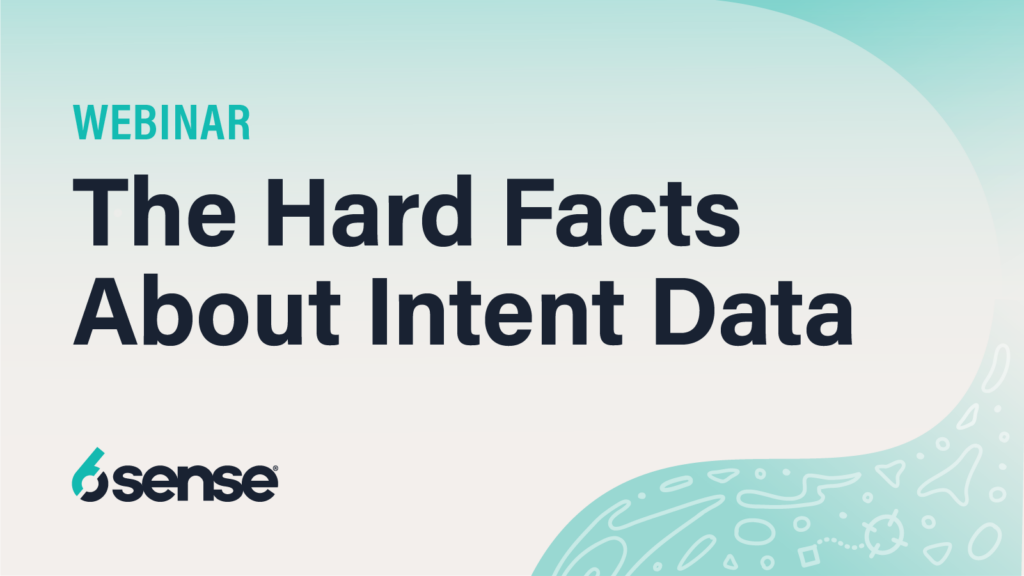Thomas Edison famously said that genius is one percent inspiration and 99 percent perspiration — and of course, he was talking about marketing genius. (Just go with it.) All the cold calls, trade shows, webinars, and nurture campaigns have to get marketing teams somewhere, right? Well… Inspiration helps, but what today’s marketers need most isn’t just a light bulb moment; it’s predictive marketing.
Predictive marketing: what is it and what’s it in for you?
The word “predictive” can make predictive marketing seem more daunting than it actually is. To pull from Salesforce’s definition, predictive marketing is marketing that uses big data to develop accurate forecasts of future customer behaviors, buying patterns, and recommendations. Basically, it’s intelligent marketing that uses technology to learn from the past and inform the future — enabling marketers to optimize processes and resources along the way.
Predictive marketing isn’t the big data itself; it’s what you do with it. Data science solutions, such as AI-powered predictive models, enable marketers to predict which marketing strategies and tactics will most likely work based on historical data.
How predictive models help marketers learn, adapt, and act
Predictive models learn more and predict more accurately based on the data they’re fed, and when implemented and managed correctly, they’re continuously fed. This combination of historic and ongoing, current data makes intelligent decision making much easier and the results more accurate.
Marketers that employ predictive models can better adapt and navigate changes to the business and the market. To go with a food metaphor, predictive marketing is the marketing you know with less spaghetti thrown at the wall in order to see what sticks. You still throw some spaghetti — predictive models need something to eat, after all — but with ultimately less mess and more rewarding meals over time.
With every marketing activity put forth, models are being fed and producing insights. For marketing teams not yet using predictive marketing, solving for the unknown takes much more manual effort, trial and error, and time.
The benefits of predictive lead generation
Speaking of solving for the unknown — if you’re a marketer, chances are you’ve had more than your fair share of scanning badges at an event, gathering form fill data from your latest ebook, etc., and then passing those piping hot leads over to sales and hearing… crickets.
That’s because the vast majority of MQLs simply don’t convert. MQLs are often more convenient than they are accurate, relying on outdated or incomplete ways of getting data. A prospect that may seem like the right fit on paper may not be in-market to buy at the time, and a prospect that doesn’t fit one of your traditional buyer personas may in fact represent a new or unseen target market.
MQLs vs. intent data
These are the kinds of insights intent data provides, giving you visibility into the buyer activity that’s most relevant and up to date. And with all those myriad ways of bringing people into your funnel — with drip campaigns, gated content, etc. — you could be ignoring the place where most buying activity takes place today: the Dark Funnel™. That’s where signals like anonymous web visits, third-party research, and false form fills often go unseen. Intent data helps you understand what interested buyers care about now and where they are in the buying journey.
Love the lead you’re with? No! Find the ones that are right for you
So you get it: traditional lead generation involves a lot of guesswork and working accounts that may be a poor fit. And while account-based sales and marketing is a step in the right direction, businesses today need orchestrated account engagement — wherein all members of the revenue team are focused on a list of dynamic targeted accounts (the operative word here being “dynamic”).
Today’s buying journeys are complex and difficult to track through traditional means. An account engagement platform that allows you to one, select the accounts that are an ICP fit and that are in-market to buy and two, seamlessly orchestrate engagement, makes predictive lead generation possible.
Learn more about the evolution of lead generation:
Customer story: In-market as the new inbound
Ingeniux is the agile experience platform for digital content management. Their platform empowers brands to manage and deliver content to websites, portals, apps, and technical publishing. Though a specialized provider, Ingeniux dealt with a very saturated content management system (CMS) market; most brands have an established CMS, so the Ingeniux sales and marketing teams had to try and find unicorns: brands looking to entirely re-platform their content infrastructure. But how? Where?
Hundreds of MQLs… but few in-market accounts
Ingeniux had been able to generate hundreds of MQLs through demand gen campaigns. But upon reviewing the leads, they found that the form fills didn’t translate to in-market accounts for their solutions. The accounts that would prove most relevant to them lived largely in the Dark Funnel, which only a solution like 6sense could uncover.
Account engagement over lead generation
The 6sense platform helps Ingeniux identify in-market accounts using intent data with accuracy, precision, and speed, while also providing an account-based advertising platform to surround target customers with brand messaging and promotions to help establish awareness and credibility. Generally speaking, engaging an account is considerably more cost-effective than generating leads — and with 6sense, Ingeniux can focus on the former.
“Knowing which accounts to prioritize and invest more resources on is an ongoing challenge for SDR teams. With the buyer intent and predictive modeling insights from 6sense, the guessing game becomes a strategic game plan for our reps,” says Kris Laird, Director of Sales Development at Ingeniux.
Predictive marketing helps you identify demand, not waste time trying to create it
TOPO — a research and advisory firm that specifically studies high-growth companies to help sales and marketing organizations learn how to achieve repeatable, scalable revenue growth — recently revealed their predictions for revenue teams in 2021. Their analysts explained that demand isn’t about demand creation; it’s about demand identification. This is particularly true for sales and marketing teams today.
Predictive anything takes work to get up and running, but that’s where a partner and platform like 6sense can help. Rather than waste energy marketing to everyone and working every potential lead, let predictive marketing be your guide.
Get smarter about your marketing strategy. Buy the book: No Forms. No Spam. No Cold Calls.






